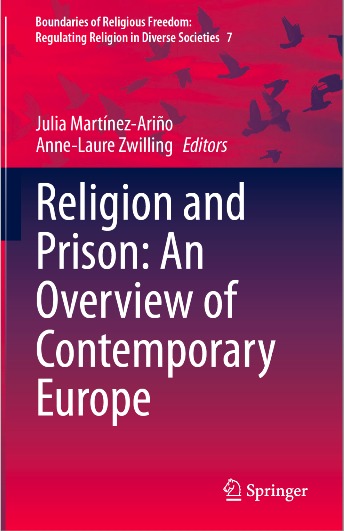Religion in Prison: An Overview of Contemporary Europe

Penitentiary institutions and religion have historically been strongly connected in some parts of the world. In Early Modern Europe, for instance, prisons and other correctional facilities were run by religious orders, both Catholic and Protestant. Even earlier, monasteries in the Middle Ages already used imprisonment for both members of the institutions as well as lay persons as a form of punishment (Spierenburg, 2007). One of the legacies of the historical contest between religious and secular institutions for control over people and territories is that where prisons were once controlled by religious authorities, now they are largely controlled by states. This does not mean, however, that the relationship between religions and prisons is clear-cut. Indeed, it is anything but, as the new edited volume Religion in Prison: An Overview of Contemporary Europe (Springer, 2020), makes plain.
The book is the result of the hard work of various colleagues in Europe and beyond over the last four years. The idea of editing this book on the presence and regulation of religion in the penitentiary establishments of various countries came up at a workshop organised by the EUREL network in Strasbourg in 2015. In that meeting, the members of the network, each of them representing a different country, presented a brief overview of the legal regulation of religion in prison in their respective national context, including historical and sociological or ethnographic data, if available. Given the richness of those country reports as well as the interesting patterns and trends observed, Dr. Julia Martínez-Ariño and Dr. Anne-Laure Zwilling decided to transform these intriguing impressions into a book. The volume contains chapters for 23 countries, each written by one, two or three authors, incorporating both sociological and legal perspectives. In addition to contributions that describe the situation regarding religion and prison across Southern, Eastern, Northern and Central European countries, the volume also includes chapters on Turkey and Russia.

Studying religion in prisons serves various analytical purposes. First, this approach enables analysing the ways in which legal and political frameworks to govern religion are applied and negotiated on the ground by street-level bureaucrats, employees, religious actors and the prison population. Second, the prison context provides rich insights into broader socio-religious transformations. While prisons are very distinct environments, they also reflect broader trends, such as the religious de-monopolisation of a country, the religious diversification of populations, the increasing attraction to various forms of spirituality and the securitisation of religion to name but a few. Third, studying religion in such concrete and well-delimited spaces allows us to examine the influence that dynamics specific to a particular organisation have on religious expressions and their governance. In other words, religion plays different roles in prisons than in it does in other institutional settings, such as hospitals, the army or schools. Examining how those different roles transform religion and shape how it is dealt with is key to the chapters in the book. Finally, while we observe certain convergent trends across European countries, examining religion in prisons enables capturing the national and local specificities in the way religion is understood, framed and governed.
The creation of a monastery in a Swedish prison, the celebration of Ramadan in Catalan establishments, the development of chaplaincies of various religious denominations in Austrian, Danish, Dutch and English prisons and the increasing presence of religion in the prisons of many post-communist Eastern European countries, such as Bulgaria and Romania, are just some examples of the topics addressed in the book. We hope that these and other topics spark interest among researchers in the study of religion, prisons and diversity!

